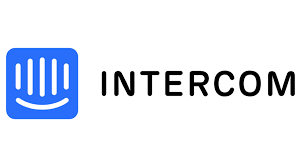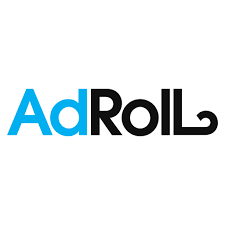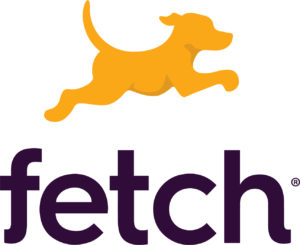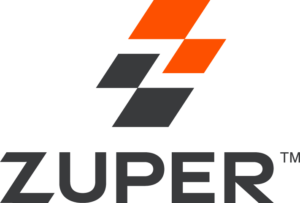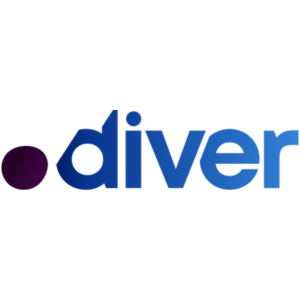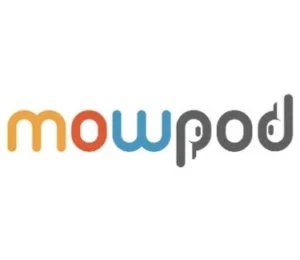LISTEN IN A POD APP
Filters
Jeffrey Hayzlett | C-Suite Network
How to act like a Media Company — Jeffrey Hayzlett // C-Suite Network
Jeffrey Hayzlett, Chairman and CEO of the C-Suite Network, explores how to elevate your content strategy. As traditional performance marketing methods lose effectiveness, brands are evolving into media companies. In response to consumers actively selecting the messages they engage with, brands are adapting by becoming more creative to capture their attention. Today, Jeffrey discusses how…
Play PodcastIain S. Thomas | What Makes Us Human
Ethical questions posed by an AI — Iain S. Thomas // What Makes Us Human
Iain S. Thomas, Author of ‘I Wrote This for You’, talks about the phenomenal rise of ChatGPT and artificial intelligence. As AI technology becomes more advanced and integrated into our daily lives, concerns are growing around AI’s potential impact on work. One of the main concerns is that automation and the use of AI-powered systems…
Play PodcastIain S. Thomas | What Makes Us Human
How ChatGPT revolutionizes culture — Iain S. Thomas // What Makes Us Human
Iain S. Thomas, Author of ‘I Wrote This for You’, talks about the phenomenal rise of ChatGPT and artificial intelligence. Over the last few weeks, ChatGPT has been making headlines for the way it is revolutionizing the content creation process. However, many fear that it will have a detrimental impact on the creative community and…
Play PodcastPaula Thomas | Let's Talk Loyalty
Web 3.0’s role in loyalty marketing — Paula Thomas // Let’s Talk Loyalty
Paula Thomas, Founder of Let’s Talk Loyalty, dives into what customer loyalty looks like in a post-pandemic world. Whether it’s Bitcoin or NFTs, Web3 technologies and solutions are getting attention from marketers and they’re finding creative ways to integrate them into their loyalty programs. While Web3 technologies aren’t expected to replace loyalty programs anytime soon,…
Play PodcastPaula Thomas | Let's Talk Loyalty
Content’s Role in Loyalty Marketing — Paula Thomas // Let’s Talk Loyalty
Paula Thomas, Founder of Let’s Talk Loyalty, dives into what customer loyalty looks like in a post-pandemic world. In today’s post-pandemic world, many brands are realizing that there aren’t as many customers out there, so they can’t afford to lose the ones they have. By incentivizing their content, they can build loyalty with existing customers,…
Play PodcastJuan Mendoza | The MarTech Weekly
Why I decided to give Juan the MarTech Newsletters — Juan Mendoza // The MarTech Weekly
Juan Mendoza, Founder and Editor of The Martech Weekly, talks about this month's MarTech news. Unlike a lot of different industries, the martech space is highly collaborative across companies and online communities. When the Martech Podcast was looking to overhaul their newsletter, they looked no further than Juan Mendoza, the newsletter guy, to try to…
Play PodcastTal Florentin | Summurai
Adding audio to your content — Tal Florentin // Summurai
Tal Florentin, Summurai Founder and CEO, discusses the rise of digital audio advertising. Podcasts episodes now show up in search results, and there are special filters for audio content. We could soon see an audio tab appear on Google’s search results, and a new playing field for SEO. Today, Tal talks about the ways that…
Play PodcastTal Florentin | Summurai
Repurposing text with audio — Tal Florentin // Summurai
Tal Florentin, Summurai Founder and CEO, discusses the rise of digital audio advertising. How many times have you discovered a great blog, promised you’d get back to it, but never did? If you had the ability to consume it in audio format during your workout, chances are you’d be more inclined to get back to…
Play PodcastTal Florentin | Summurai
Podcast & Streaming Audio marketing — Tal Florentin // Summurai
Tal Florentin, Summurai Founder and CEO, discusses the rise of digital audio advertising. Content consumption varies by the consumer and marketers should always account for this throughout the customer’s journey. While we’ve explored personalizing the user experience through video and text, audio’s potential still remains mostly untapped. Today, Tal talks about the podcast and streaming…
Play PodcastScott D. Clary | Success Story Podcast
eCommerce tech stacks & strategies — Scott D. Clary // Success Story Podcast
The Success Story Podcast Founder, Scott D. Clary continues discussions on marketing technology. In D to C eCommerce, people need to trust your brand as soon as they land on your website. When you’re a new player to the market, there are several tactics to establish brand authenticity and build trust with your prospects. Today,…
Play PodcastAbout Business Type: Media & Publishing
Modern Media
Media is the collective communication tools, outlets and channels people or entities use to deliver information and data. Early writing on paper were one of the first forms of media to inspire development in media systems like long-distance mail.
Modern media refers to the "Mediums," we use to communicate en masse. They're the communication channels used to premiere movies, play music, disseminate news and educate the public. Newspapers, magazines, the telephone, radio and television heavily impacted the way the public communicated throughout the 20th Century.
The emergence of the internet in the late 20th and early 21st Century led to a mass media explosion, leading to the rise in mobile devices, e-commerce and social media connecting people worldwide.
News and Media Literacy
Media literacy concerns the ability to identify different media types, analyze and understand the messages sent over them. Audiences consume a significant amount of media content from text messages to viral videos, advertising and more. It's important for audiences to analyze the media they consume as messages are created by people who hold varying intentions.
The messages people send over media are informed by their own political affiliations and deeply held personal beliefs. The advent of the internet made it easier to manipulate media messages, which makes it easier to deceive audiences.
Teaching media literacy encourages critical thinking to analyze and evaluate the messages and content disseminated via media. It's an emerging form of media education as younger generations enter a fast-paced, digital age that continually bombards them with marketing and messaging.
Essential Principles of Media Literacy
- All media are human constructions - All media products are created by people who make both conscious and unconscious decisions on how to present their messaging. These decisions are informed by the creator's own point of view, biases and assumptions. Media education aims to create awareness in audiences of these biases, and encourages critical thinking and analysis to determine what is real and what is manufactured by a media creator, brand or platform.
- Audiences must interpret digital media messaging - Meaning created by any form of media comes from the collaboration between the creator and greater audiences. The public interacts with the messaging, and everyone who consumes it takes different meanings from it. Media education curriculum encourages people to understand the different factors that impact message interpretation. Gender, race, social status and age are some of the main factors that affect each individual's interpretation of digital content.
- Media is influenced by business decisions and operations - Media production is a business designed to make profits. Although non-profits create media like PSAs to increase awareness of social issues, most media production is driven by profits. Corporations utilize digital media to exert their influence on content. Despite user-created content on social media, social networks like Facebook and YouTube still control the ways content is distributed on their platforms.
Media literacy education encourages consumers to determine what the commercial purpose of a media product is and how it impacts its content. Media literacy also examines how companies and organizations brand themselves, empowering audiences to dissect and analyze the narratives brands create about themselves.
- Media holds social and political implications - Modern news media and other content can contain ideological messages and values that influence power and authority. Media messaging may arise from conscious and unconscious decisions, but they all bear significant influence on what the masses believe. Although journalism aims to be objective, modern newsrooms, networks and print media engage in questionable practices, often labeling competitors fake news.
TV news coverage, advertising and fundraising can significantly influence elections on the basis of image representation and how they're portrayed in media directly influences public perception. Media education and information literacy teaches fact-checking techniques and how to identify bias and misinformation within articles and news stories.
Digital Media Literacy
Digital literacy follows the same principles as media literacy, but are applied to digital mediums. It namely concerns the ability to use information and communication technologies to create, evaluate and communicate information that requires using both cognitive and technical skills.
This form of media literacy is subject to a digital divide. Access to the internet is often limited in emerging countries and authoritarian countries where media is highly regulated and censored by local governments. This divide also refers to older generations who experienced most of their lives without using online technology and who lack technical skills digital natives grew into.
Digital natives, comprised mostly of millennials and Gen Z, grew up with the internet and learned digital skills through grade school and well into university. Regardless of access and skill level, digital literacy is a vital form of media education for the masses to build an understanding of how media technology impacts their lives in every facet.
Digital Media Literacy Principles
Core competencies of media literacy in the digital spectrum require access to broadband internet, the ability to use a computer and navigate the internet. Media studies can help bridge that gap with education. Building media literacy in the digital age requires:
- Digital citizenship - The guiding behaviors, safety practices and research rules practiced online. Comprehending and following the elements of digital citizenship empower users to utilize technology in a safe, secure manner.
- Understanding authorship - Anyone can create anything online from podcasts and blogs to disseminate harmful media messages that reinforce negative stereotypes and policies. Understanding how and why individuals create content online is critical for media literacy.
Discerning authenticity online is becoming harder as technology evolves. Teaching and practicing online media literacy gives users the skills they need to share ideas efficiently and identify harmful practices.
- Examining interdependencies - Media forms often intersect, intertwine or connect with another literally or metaphorically. Different types of media work best when they supplement each other. Creators who understand how tech impacts interdependencies expands their media literacy knowledge.
Media Marketing
The advertising industry has long relied on media as its primary method to reach audiences worldwide. It's companies and organizations' primary method to reach audiences, create brand awareness, post ads and sell products and services. There are various types of advertising media.
- Broadcast media - Television and radio are still one of the most prevalent forms of advertising media. Companies insert ads in serials, reality shows, live events and commercials to reach wide audiences. Advertisers pick and choose the channels that best fit their demographic targets to enhance ad performance. Broadcasting companies earn most of their revenue from selling advertisement slots to companies and organizations.
Radio is still a cost-effective advertising tool for companies and organizations. Radio enables companies to reach wide audiences across a geographical location, which is useful for companies who have warehouses full of product like mattresses and electronics.
- Print media - Although print media's importance is waning in the digital age, it's still valuable. Newspapers, brochures, billboards, direct mail and other print publications are widely used. Print can better cater to niche audiences compared to broadcast.
- Online media - The dominant space for all advertising in the digital age occurs online. People are connected through various ways online from email communication to social media like TikTok, Instagram, Snapchat and Twitter. Online media, categorized as new media, led to the emergence of digital marketing, creating an industry of digital marketers and consultants.
Online media allows for greater creativity, giving brands and companies more opportunities to connect with customers in unique, memorable ways. Online content includes blogs, affiliate marketer, influencer marketing and social posts.
- Mobile media - The rising use of mobile phones and devices to make decisions has positioned mobile advertising as a critical component for every business. Mobile advertising reaches consumers through their devices promoting initiatives through SMS, social media, chat groups and more mobile features. Online and mobile frequently overlap, as websites are accessible through both. Mobile-first optimizations are critical for businesses as mobile designs translate easier to desktop, compared to desktop-first designs.
How to Measure the Impact of Media
Measuring the impact of media requires understanding the different parameters and variables that affect each form of media. For example tracking performance for print, television and radio ads requires setting up a tracking number for customers to call to measure ad performance.
Internet ad performance tracks user clicks to measure the impact of an ad. Should a company not own a website, contact information can be displayed on banners to measure impact as well. Other feedback devices like coupons and form fills can measure impact as well.
Publishing
Publishing refers to the distribution of printed works, like books, magazines and periodicals. Digital mediums expanded the scope of publishing to electronic publishing of e-books, blogs, websites, journals and video games.
Publishing is responsible for increasing literacy worldwide as it made printed media widely accessible. The publishing process granted greater access to mass media, increasing social and community activities. Published content is designed to teach, provide information on niche topics, and provide education and entertainment.
Publishing is also used by governments, private companies and other organizations to further public interest objectives or satisfy administrative and compliance requirements. Types of published content includes annual reports, market research, policy briefings or technical reports.
Publishing Industry
The publishing industry is primarily concentrated in print publications, although it does produce online material. The most common types of publications include:
- Newspaper publishing - Newspapers are the most common form of published mass media. Millions of people pick up newspapers daily from coffee shops to news stands to read the latest breaking news. Although more people prefer mobile devices to read the news, millions still prefer physically holding a newspaper.
They're generally sold to subscribers, both online and offline. Approximately one-third of publishers in the U.S. are newspaper publishers. Their content primarily contains news articles, brand advertising, resource and third-party listings.
- Periodical publishing - Periodicals are publications that debut in new editions on a regular basis. Although newspapers are considered periodicals, periodical publishing primarily concerns magazines and academic journals. At least one-third of publishers in the U.S. publish periodicals, but doesn't include newspapers.
The information science and education community refer to periodicals as serials. Serial content ranges from education curriculums to visual materials in the sciences to long-form informational content.
- Book publishing - Book publishing accounts for nearly $100 billion in revenue in the U.S. publishing industry. Most book publishing is conducted by a small number of large book publishers. Medium and small business book publishers typically specialize in specific areas. The book publishing industry also has a sizeable population of self-publishers who publish their own work in the marketplace.
Marketing in the Publishing Industry
Book publishers rely on marketing to create awareness for books among target audiences and consumers. The main goal of publishing marketing is to generate book sales.
Publishing house's book marketing departments work with sales departments to get books in distributors' hands and prominently placed on bookstore shelves. Books are usually assigned a marketing manager or director to oversee marketing for dozens of titles.
Book Publishing Marketing Strategies
Once an author submits a book for publication, marketers get to work determining target audiences for the book. They evaluate the size of the market and devise strategies to best reach readers or establish readership for the book.
Marketers then create a marketing plan to account for the sales materials, point-of-sale displays and estimated advertising costs for the book. Generally the more a publisher pays to acquire book distribution rights, the greater the marketing budget. Marketing budgets support the following strategies.
- Book sales material development and support - Book marketing departments closely work with promotion departments to develop standards for sales tools with each book. This process includes writing seasonal catalog descriptions for publishers. Sales use catalogs to present book rosters to booksellers, libraries and distributors, who select which books they'll choose to sell.
- Point-of-sale promotional material development - The point-of-sale promotions department manages, designs and creates consumer marketing material. They create in-store signage and bookmarks for consumers at the store and distributor level. Point-of-sale promotions are commonly found in brick-and-mortar chains. The prominent placement of a book depends on an account's cooperative advertising funds.
- Social media campaign development - Publishing houses rely on social media and outreach to connect with bloggers who read and review books. They're part of greater media promotions. Social campaigns are generally developed in-house for big budget books, although responsibility often falls on the author for platform development initiatives.
- Print and online advertising - Although print advertising is a traditional media form for book publishing, online ads are more common. Where and when a book is advertised depends on how marketing departments decide how to best use a book's marketing budget.
- Cross promotions and sponsorships - Books that share target audiences and their interests with companies perform well using cross promotions and sponsorships. Food companies are known for sponsoring cookbooks, or offering them as prizes and giveaways.
Social Media Publishing
Social media platform publishing tools empower businesses to create, manage and publish content across owned social media channels. Managing social accounts across platforms from Instagram to Twitter, TikTok and Snapchat is vital to supplement campaigns, products and events. Without tools publishing can be time-consuming and requires more strategy, skills and resources.
Social platform publishing tools grant teams or individuals the ability to publish posts to multiple accounts on several platforms at once. Publishing tool software helps customize posts and evaluates campaign success from embedded analytics software. Users can also schedule publishing times for posts to reach audiences at the right time and moment.
Read MoreRead Less
Sponsors of the MarTech Podcast




